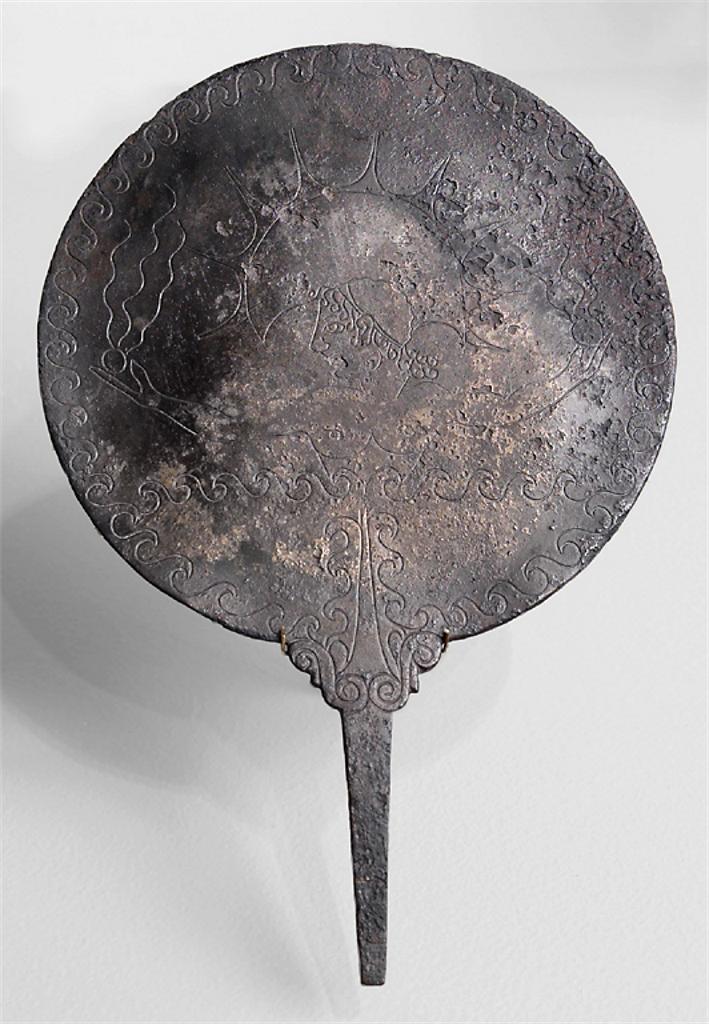First Etruscan Settlement Found in Sardinia
An Etruscan settlement dating back to the Ninth Century BCE has been found on the Sardinian coasts near Olbia. Archaeologists working in the Sassari and Nuoro provinces found the ruins on the island of Tavolara. Etruria’s famous cities including Populonia, Vetulonia, Vulci and Tarquinia flourished during the Iron Age. The Monte Prama statues in Sardinia date to this era, as well so-far-discovered intricate gold jewelry and elaborate funerary statuary.
Bronze mirrors, found at this and at hundreds of Etruscan burial sites, are beautifully detailed examples of this ancient work. Most are cast in the shape of a disk with a handle. The back of the mirror was engraved or worked in relief, usually with mythological subjects from Greek art, or it was covered with inscriptions. The other side, was highly polished to provide a reflection. Shown here is a mirror handle is in the form of a serpent or a bird. The back is incised with four figures, one with a headdress. The scene may illustrate the judgement of Paris, an apt subject for a mirror.
According to a bulletin published 8 January in the Italian edition of ANSAMed, the full results of the excavation will be released later in 2018.
References: “Etruscan settlement found in Sardinia for first time; sheds light on relations between Tyrrhenian Sea shores”, 8 January 2018. ANSAMed.it; and Xavier F. Salomon. “The Etruscan Experience” in Apollo. July-August, 2017, Vol. 186 Issue 655, p64, 6 p.; Apollo Magazine Ltd. Language: English, Database: Academic OneFile
Scarab of a Lion, Carnelian, mounted in a ring with band. C. 400 BCE. The John and Mable Ringling Museum of Art, Sarasota, Florida, Nr. SN1435.143.
Etruscan Mirror, bronze. C. 300 BCE. The Minneapolis Institute of Arts, Nr. 62.13.
Etruscan “leech” earrings, gold. C. 350 BCE. Rhode Island School of Design Museum, Providence.
Etruscan Bulla with Daedalus, gold pendant. C. 450 BCE. The Walters Art Museum, Baltimore, Maryland, Nr. 57.371.
Etruscan acrobat (probably the handle of a cista lid), bronze. C. 350 BCE. Rhode Island School of Design, Providence, Nr. 85.107.1.
Further Reading: Colette Hemingway and Seán Hemingway. “Etruscan Art.” In Heilbrunn Timeline of Art History. New York: The Metropolitan Museum of Art, 2000–. (October 2004)




